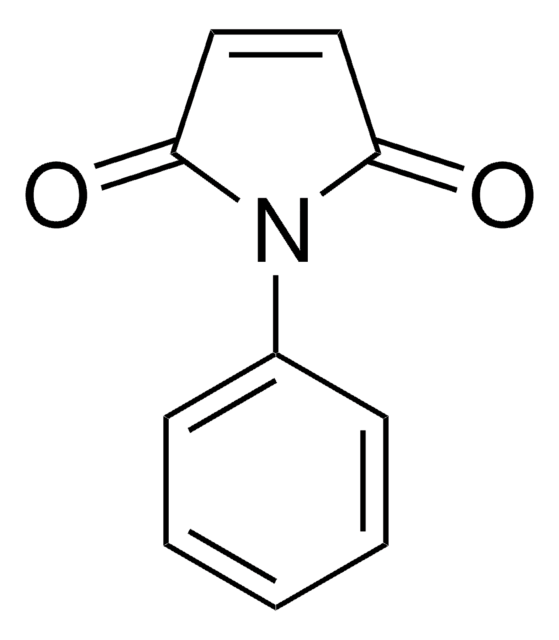P7908
N-(1-Pyrenyl)maleimide
Synonym(s):
1-(1-Pyrenyl)-1H-pyrrole-2,5-dione
About This Item
Recommended Products
form
powder
mp
235-237 °C (lit.)
SMILES string
O=C1C=CC(=O)N1c2ccc3ccc4cccc5ccc2c3c45
InChI
1S/C20H11NO2/c22-17-10-11-18(23)21(17)16-9-7-14-5-4-12-2-1-3-13-6-8-15(16)20(14)19(12)13/h1-11H
InChI key
YXKWRQLPBHVBRP-UHFFFAOYSA-N
Looking for similar products? Visit Product Comparison Guide
Related Categories
Application
- Oligodeoxynucleotide derivatives
- Polymer conjugates of immunogenic peptides
- Modified oligonucleotides for biosensing applications,
Reactant:
- Involved in synthesis of thermally stable fluorescent maleimide/isobutene alternating copolymers
- Used as derivitizing agent for determination of glutathione disulfide levels in biological samples
Packaging
Signal Word
Warning
Hazard Statements
Precautionary Statements
Hazard Classifications
Eye Irrit. 2 - Skin Irrit. 2 - STOT SE 3
Target Organs
Respiratory system
Storage Class Code
11 - Combustible Solids
WGK
WGK 1
Flash Point(F)
Not applicable
Flash Point(C)
Not applicable
Personal Protective Equipment
Certificates of Analysis (COA)
Search for Certificates of Analysis (COA) by entering the products Lot/Batch Number. Lot and Batch Numbers can be found on a product’s label following the words ‘Lot’ or ‘Batch’.
Already Own This Product?
Find documentation for the products that you have recently purchased in the Document Library.
Customers Also Viewed
Articles
Self-assembled monolayers (SAMs) have attracted enormous interest for a wide variety of applications in micro- and nano-technology. In this article, we compare the benefits of three different classes of SAM systems (alkylthiolates on gold).
Nitric oxide (NO) as a signal transporter in neurons, endothelial cells and in the immune system.
Our team of scientists has experience in all areas of research including Life Science, Material Science, Chemical Synthesis, Chromatography, Analytical and many others.
Contact Technical Service
![N-[2-(Dansylamino)ethyl]maleimide BioReagent, suitable for fluorescence, ≥99.0% (HPLC)](/deepweb/assets/sigmaaldrich/product/structures/318/294/efefa674-7883-4fc7-ad57-ea90ff85069a/640/efefa674-7883-4fc7-ad57-ea90ff85069a.png)
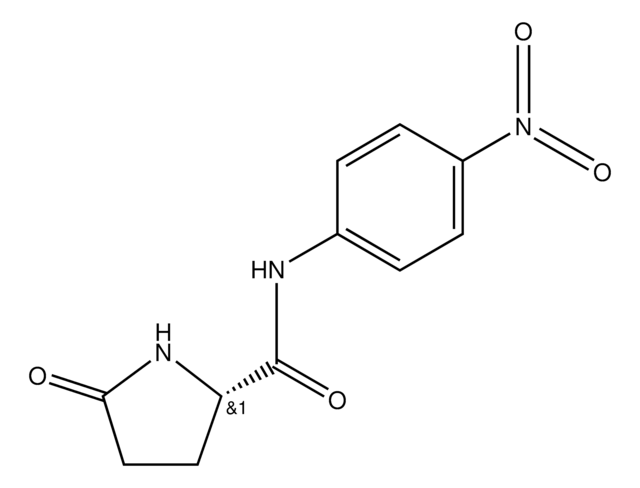
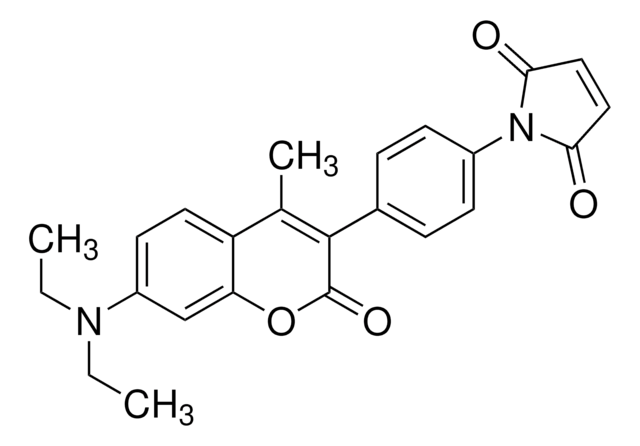
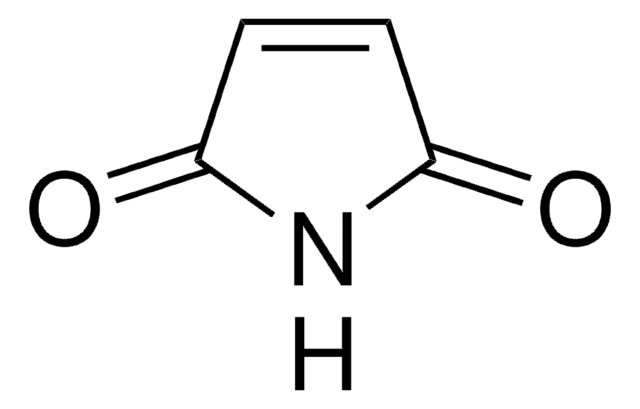
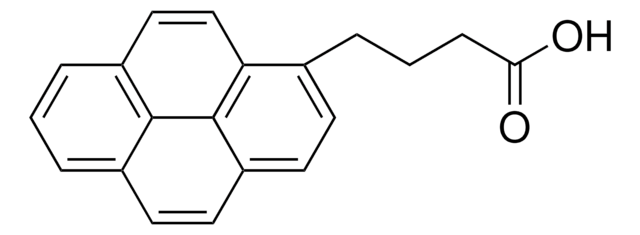

![7-Diethylamino-3-[N-(2-maleimidoethyl)carbamoyl]coumarin suitable for fluorescence, BioReagent, ≥97.0% (HPLC)](/deepweb/assets/sigmaaldrich/product/structures/341/038/a7e0c464-8abe-4eb0-b253-6537f649d89c/640/a7e0c464-8abe-4eb0-b253-6537f649d89c.png)
